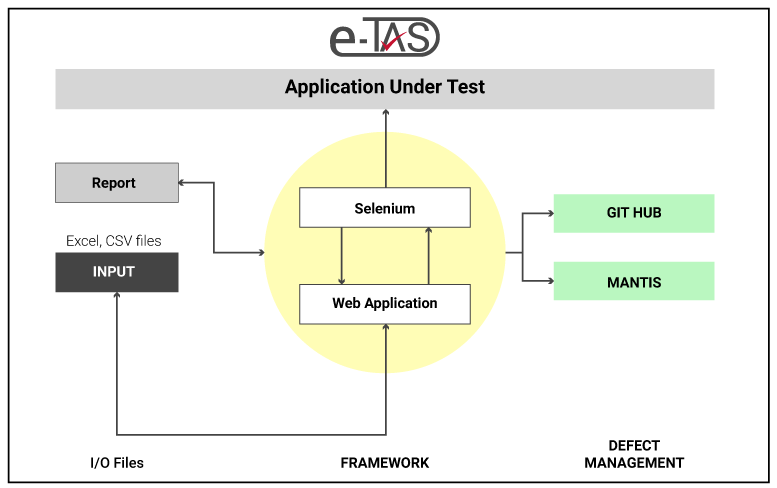Product Engineering Partnerships: The What, Why, and How

The wheels of modern technology are made of engineered products. Software product engineering has this innate ability of giving new direction to businesses. Consequently, digital enterprises are opting for more product engineering services today. A foundational product development strategy is the starting point for most. And, industry experts recommend a strong partner collaboration as the natural next step.
Imagine, you are setting up a superstore. You have already purchased the plot and invested in the construction. The next step is to have a process in place for smooth operations. First, you need resources and helping hands for inventory procurement and stocking. Further down the line, you also need billing personnel, helpdesk associates, and a packaging team. The need to expand and modernize will grow as you will keep scaling up. After a time, accomplishing everything will be beyond your individual capacity and expertise. Tying up with a manpower recruitment agency would be a smart decision at this point.
Software product engineering is similar in essence. But, it’s also a bit better. To deploy a robust product, you first need a robust product development strategy. A competent partner who is conversant with technology can help you here. This partner handholds you to reign in growth by turning your idea into an actual engineered product. But, more into that later – let’s start with the basics first.
What are product engineering services (PES)?
Product engineering services (PES) refer to solutioning that assist in the end-to-end lifecycle management of software applications. These services support a product right from its initiation to its post-deployment customizations. They leverage a sturdy combination of software, tools & operating systems, IT interfaces, and human ingenuity.
The product engineering market is defined by constant innovation and consistent competition. At the global level, the market is expected to rise to $1.4Tn by 2027, growing at a CAGR of 7%.
Agile software product engineering is critical for standing out in today’s business climate.
The pace of growth can be unprecedented, however. It may be difficult at times to catch up with the speed at which the industry is growing. Keeping such exigencies in mind, a winning engineered product always starts with a winning product development strategy. But, how to get there? Collaborate with the right product engineering services partner.
Who is a product engineering partner/services provider?
A provider of product engineering services is an IT organization with the latest software development know-how. This third-party vendor has specialized resources for futuristic software application development. Once assigned, it manages your product end-to-end from planning to on-demand customization.
How to know which software partner is best suited for you? The following parameters can be telling – skill certifications, understanding of legacy applications, process documentation capability, and budget compatibility.
Why do you need product engineering services?
- Transform novel ideas into actual applications
- Keep software products ahead of the competition
- Customize products as per market dynamics
- Leverage specialized know-how on product engineering
- Ensure safe development and deployment of products
- Minimize budget-related uncertainties
Innovation drives the modern business world. Today’s independent software vendors (ISVs) leverage cutting-edge applications for meeting business commitments. Alongside, they also need to stay on top of the technology game by transforming ideas into value-yielding products. A product engineering services provider fits these demands perfectly. Let’s take a deeper look into the benefits of tying up with such a service agent.
The six core benefits of product engineering partnerships:
1. Transform novel ideas into actual applications
An investment in engineered products in time saves nine. Modern enterprises need to keep disrupting technology for revenue maximization. Training your internal team on the evolving dynamics of IT is time-effective (especially, if you are a non-IT firm). Onboarding new staff, on the other hand, is both time- and cost-sensitive. Never let the dearth of infrastructure or experience stop you from having a product development strategy in action. Tie up with a provider of software product engineering services. They work alongside your team to oversee the holistic adoption of all your technical ideations. The best part? The ingenuity of PES is such that even if it involves outsourcing your IT needs you remain in much control.
2. Keep software products ahead of the competition
One of the biggest challenges of operating in the new-age software landscape is staying relevant. You may have a brilliant inflow of engineered product ideas that you desire to launch. But by the time you move them to production, someone else may already be deploying them. A long capability-development cycle and a longer time to market are growth impediments. Pair up with a sound product engineering services provider. Design your product development strategy, and set it into motion quickly.

Product engineering services have many advantages vis-à-vis in-house product development
3. Customize products as per market dynamics
Optimization is key to the product development strategy of engineered applications. A good product engineering services partner always starts with an initial MVP (minimum viable product). Based on the feedback received on it, the partner consistently updates the product till user acceptance is stabilized. Software product engineering is thus a process of consistent innovation and consequent improvement.
4. Leverage specialized know-how on product engineering
Robust product engineering services leverage the latest technology stack and also traditional best practices. For launching cutting-edge applications, your product development strategy needs the right skill sets. A PES partner is specialized in the nitty-gritty of these evolving technologies and the associated process flows. Pair up your requirements with their technical edge to launch game-changing engineered products.
5. Ensure safe development and deployment of products
A software product engineering project is a highly detailed one. It’s true in essence that an engineered product is always one wrong calculation/prediction away from being rendered futile. Read about the 5 most commonly faced software development challenges.
Collaborating with a product engineering services provider is a full-proof solution toward this. These vendor organizations take the end-to-end responsibility for the development of your application. They engage certified resources and SMEs for the safe and optimized deployment of the product. By outsourcing your product needs to them, you save a lot of time and effort to focus on your core activities instead.
6. Minimize budget-related uncertainties
A sound service provider always shares a well-defined cost estimate at the very beginning of the project. The estimates are well-documented and integral to the product development strategy. There are no ad hoc expenses for project digressions and experimentations. Such chances are generally higher when you take up a project in-house. A PES partner is well-aware of what it is doing and the methodologies it is leveraging for the software product engineering. Cost variations come into effect only when you need additional customizations for the engineered product.
How to set into motion a robust product engineering process?
A well-defined product engineering services plan includes the following:
Product planning
The success of any product depends a lot on how you plan it. The foremost step is to know the mission and the expected outcome from the product you wish to develop. A product engineering services provider will go a step further and do a SWOT analysis to determine your product’s feasibility. It will define the product features and enhancements as per your business needs. It will also delve into thorough research of the ongoing market trends, competition, technology used, and target customer base. Finally, it will come up with a customized product idea as a part of your product development strategy.
Product conceptualization
It takes the right technology and skill to convert an innovative idea into an outstanding product. An expert product engineering services partner sets into motion a holistic product development cycle. It starts with selecting the right tools for designing the product architecture. Then, the partner moves to production where its specialist coders encode the product as per your requirement. The compilation is then subjected to quality tests for ensuring flawless operations. The final engineered product is then deployed either at the client site or catered to end-users. A good PES partner takes further accountability for the maintenance and continued user excellence of your product.

Key components of a product development strategy
Platform modernization and migration
Today’s modern IT systems need consistent, flexible, and innovative technology upgrades. A software PES partner starts with a detailed product development strategy. It includes a thorough assessment of your IT infrastructure and business processes. The next step involves a platform migration/upgrade as needed. Data archival/retirement follows from here for the safekeeping of legacy data. After the new engineered application is deployed and integrated, the PES partner continues to provide staff training, go-live support, maintenance services, and timely system upgrades.
Quality analysis and testing services
A well-accepted product is well-tested before deployment. A good PES partner identifies your testing requirements and includes them in the product development strategy. It designs a feasible test automation plan for you. It leverages best-performing automation tools to execute automated test cases for your engineered product (software, web, and mobile). Both analysis and reporting are made accessible in real time. The software product engineering partner also provides automation training to your software development teams. It further continues to provide maintenance support for the long term.
Did you know, agile automation testing today is heavily reliant on scriptless test automation (STA)? Most modern PES organizations are using the same to deliver customer success.
Information security and consulting
Information security is critical for all data-driven businesses. A good product engineering services provider can help you assess the vulnerable areas in your enterprise where information needs protection. The PES partner offers a mix of technology solutions and governance practices to protect your information assets. It also designs an ideal governance policy based on your enterprise risk, security challenges, and compliance needs. The partner further trains your team and implements a program for long-term security maintenance.
Estuate has dynamic and customizable product engineering solutions in its ambit
Our experts work closely with business teams to understand their requirements and develop customized high-performing products. Design and launch game-changing software products and applications with our innovative solutions.
We cover all major quarters of product innovation:
- Product planning
- Product conceptualization
- Platform modernization and migration
- Quality analysis and testing services
- Information security and consulting
So, if you are looking for dynamic product engineering solutions, let innovation drive your business. We are right here to help.
Do you think it is necessary to collaborate with an external product engineering firm for deploying robust products? What difference would it make if you develop the products in-house?








